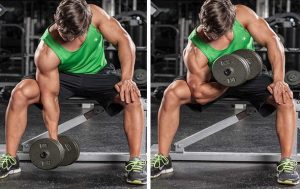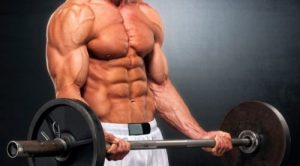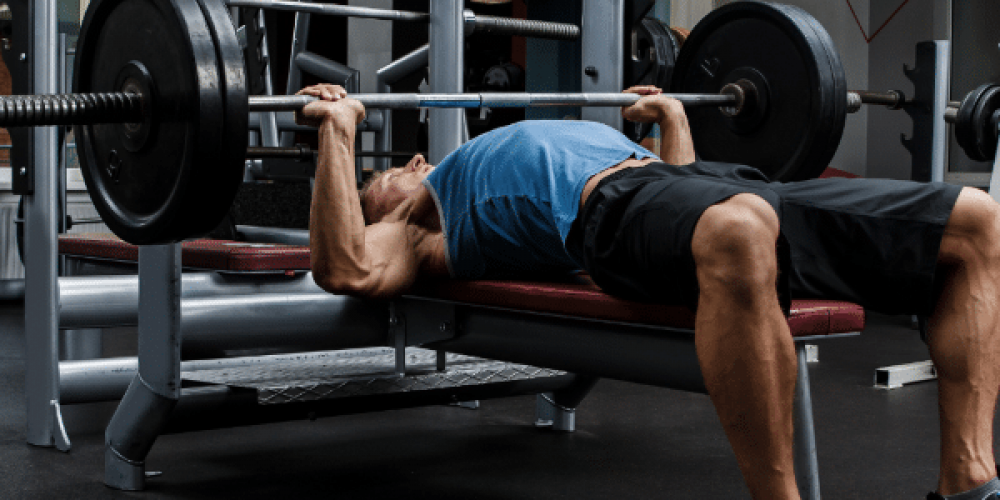The bench press is a classic compound exercise that targets multiple muscle groups, including the chest, shoulders, and triceps. It is a staple in many workout routines, and for a good reason – it can help build upper body strength and muscle mass.
However, improper form can lead to injuries and prevent you from reaching your full potential. This guide will cover everything you need to know to master the bench press and achieve maximum gains.
Anatomy of the Bench Press
Before we dive into the specifics of the bench press, it’s essential to understand the different muscle groups involved. The bench press primarily targets the pectoralis major (chest), anterior deltoids (shoulders), and triceps. The secondary muscles include the serratus anterior (under the armpit), lats (back), and core muscles.
Proper Technique
Set Up
Proper setup is crucial to ensure proper technique and prevent injury. Follow these steps to set up for a bench press:
- Adjust the bench to the appropriate height. Your feet should be flat on the floor, and your eyes should be directly under the bar.
- Place your hands on the bar shoulder-width apart, with your palms facing away from you (overhand grip).
- Unrack the bar and bring it over your chest, directly above your shoulders.
Execution
Once you’re setup, it’s time to execute the bench press. Follow these steps to ensure proper technique:
- Take a deep breath and brace your core.
- Lower the bar down to your chest, keeping your elbows close to your body.
- Pause for a moment at the bottom of the lift.
- Push the bar back up to the starting position, exhaling as you press the weight.
Bench Press Styles
The bench press is a versatile exercise that can be performed in various styles, but two of the most popular styles are the powerlifting and bodybuilding styles.
The Powerlifting Style
The powerlifting style of bench press emphasizes lifting as much weight as possible with the fewest repetitions. This style typically involves a broader grip on the barbell and a shorter range of motion, with the barbell coming down to touch the chest and then being pushed back up to full extension. Powerlifters often use “leg drive,” which involves driving their feet into the ground to create a stable base and generate more power during the lift.
The Bodybuilding Style
On the other hand, the bodybuilding style of bench press focuses on building muscle mass and developing a well-rounded physique. This style typically involves a narrower grip on the barbell and a more extended range of motion, with the barbell coming down to touch the chest and then being lifted to a point just short of full extension. Bodybuilders often use a slower and more controlled lifting tempo to emphasize muscle activation and engagement.
Which Should You Pick?
Deciding which bench press style to pick ultimately depends on your personal fitness goals and preferences. Regardless of your style, it’s essential to use proper technique and form to avoid injury and get the most out of your workout.
Make sure to choose a weight and grip width appropriate for your fitness level, and focus on maintaining good posture and breathing throughout the lift. You can also consult a fitness professional or personal trainer to help you develop a workout plan tailored to your individual needs and preferences.
The Rules Of Bench Pressing
Here are the rules of bench pressing broken down into four sections:
Feet Flat on the Floor
One of the most important things to remember when bench pressing is to keep your feet flat on the floor. It helps to create a solid base for your body, which will help you to maintain proper form and lift more weight safely.
Shoulder Position
Proper shoulder position is also vital when it comes to bench pressing. Your shoulders should be pinned back and down throughout the lift, which will help to stabilize your upper body and prevent injury.
Elbow Position
The position of your elbows is also essential when bench pressing. Ideally, your elbows should be tucked in at a 45-degree angle to your body rather than flared out to the sides. It will help keep your shoulders safe and stable and allow you to generate more power from your chest muscles.
Hand Position
The position of your hands on the barbell can also make a big difference in your bench press. Your grip should be tight but comfortable, with your hands spaced evenly on the bar.
By following these rules of bench pressing, you’ll be able to lift more weight safely and effectively. Remember to start with a light weight and gradually increase as you build strength, and always listen to your body to avoid injury.
Bench Press Variations
Several variations of the bench press can add variety to your workout routine and help you target different areas of your chest, shoulders, and triceps.
Incline Press
The incline press is a variation of the bench press that targets the upper portion of your chest muscles. Instead of lying flat on a bench, you’ll set the bench at a 30 to 45-degree angle and press the barbell or dumbbells up toward the ceiling. This variation also places more emphasis on the front part of your shoulders.
Check out our “Incline Vs. Decline Bench Press” blog for detailed information about these variations.
Floor Press
The floor press is a bench press variation performed while lying on the floor. It involves pressing the barbell or dumbbells up toward the ceiling while keeping your elbows and shoulders in contact with the floor. This variation helps you to develop strength at the bottom of the bench press range of motion and can also help to reduce strain on your shoulders and wrists.
Eccentric-Focused Mixed-Style Incline Press
This variation of the incline press focuses on the movement’s eccentric (lowering) portion. Instead of pressing the weight up explosively, you’ll take 3-5 seconds to lower it, then press it back up quickly. This variation emphasizes the chest muscles and can help you build strength in the bottom half of the bench press range of motion.
Single-Arm Incline Double-Explode Press
The single-arm incline double-explode press is a unilateral exercise that involves pressing one dumbbell up explosively, then pausing at the top before repeating the movement with the other arm. This variation helps to improve overall muscle control and coordination and can also help to correct muscle imbalances between your left and right sides.
These are just a few examples of the many bench press variations you can incorporate into your workout routine. Each variation targets different areas of your chest, shoulders, and triceps and can help you to build overall upper body strength and muscle mass. Always use proper form and start with a weight you can handle, gradually increasing the weight as you build strength over time.
Share this post
Share this post
Other posts about Workout

Incline Vs Decline Bench Press
Both the incline and decline bench press build the upper body muscles, including the pectoral, front deltoid, and triceps muscles.

Curl concentration
This bodybuilding exercise solicits and develops the biceps. Curl concentration is an exercise in isolation that will allow you to fine tune your arms. Curl

Curl Barbell
This bodybuilding exercise solicits and develops the biceps. The curl bar is the basic insulating exercise for the biceps. Curl Barbell : Targeted muscles The








Comments 0